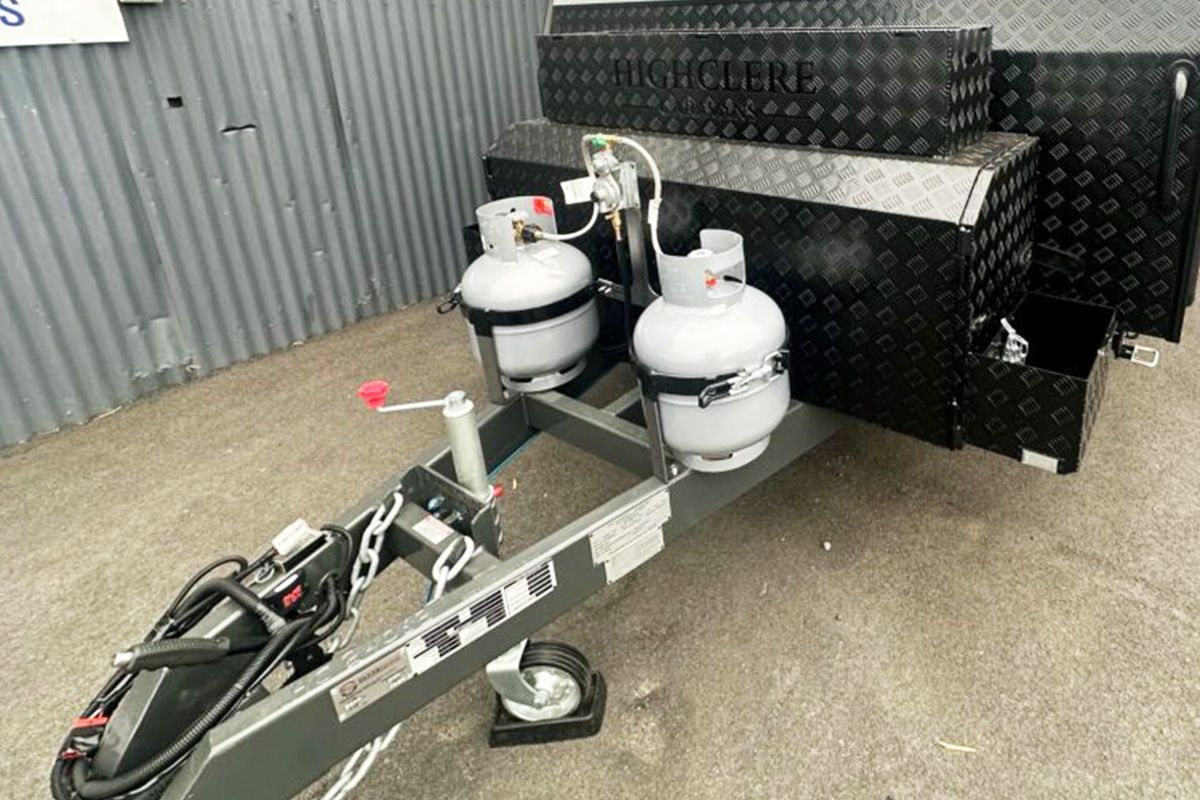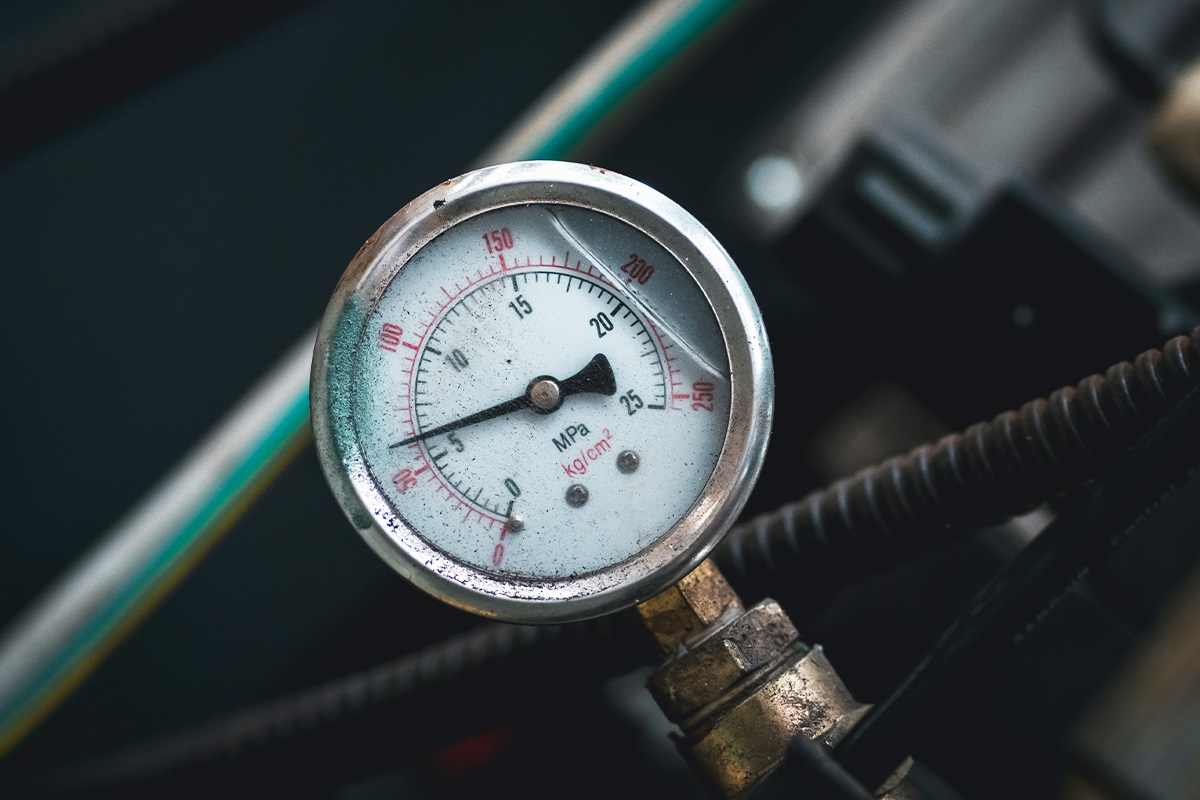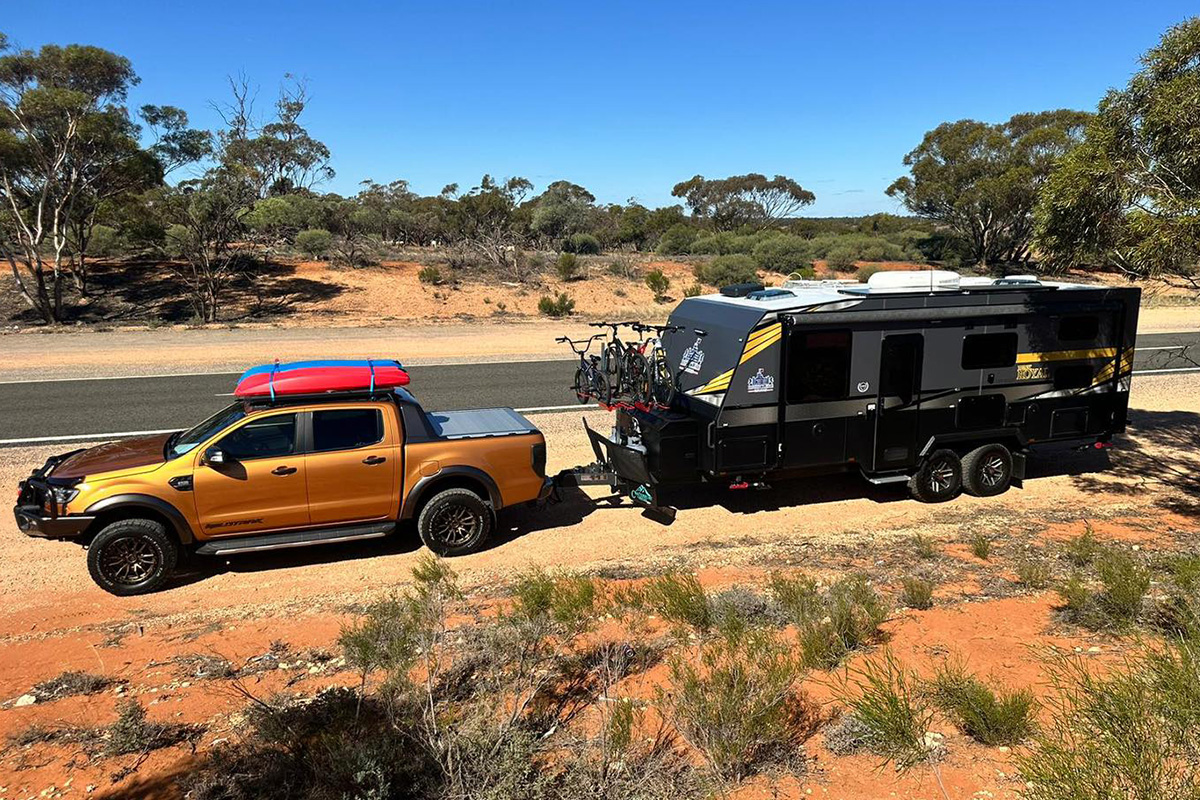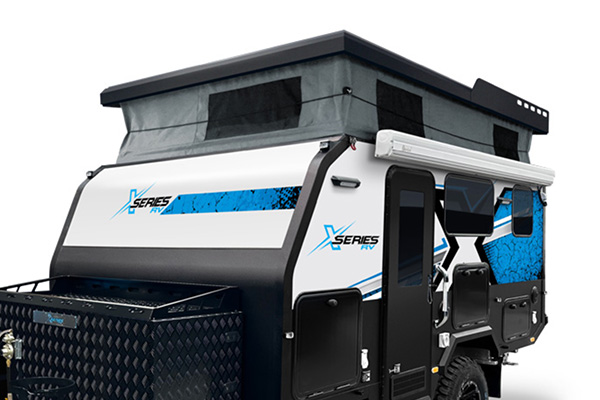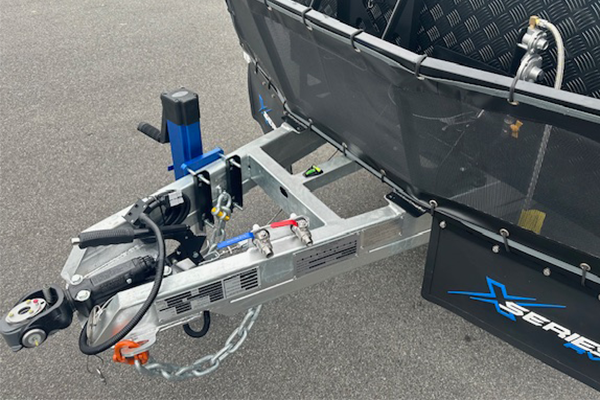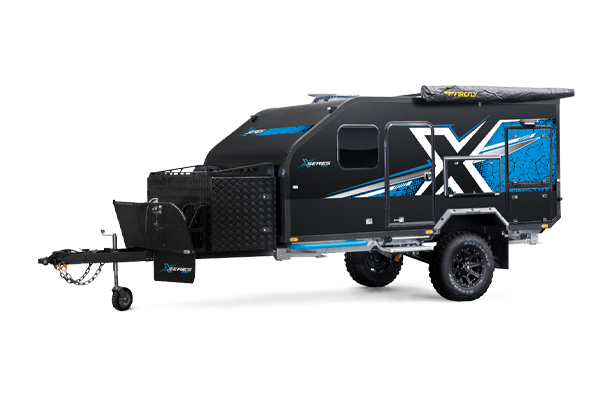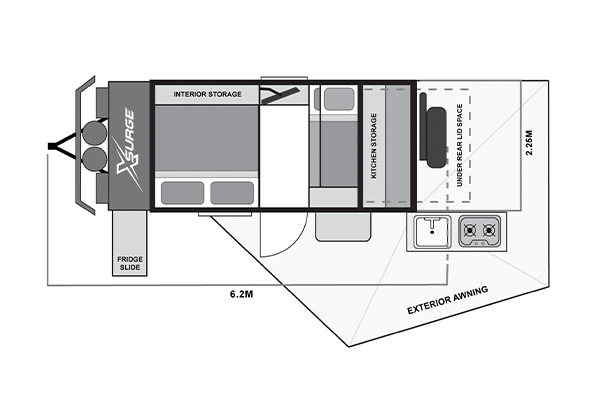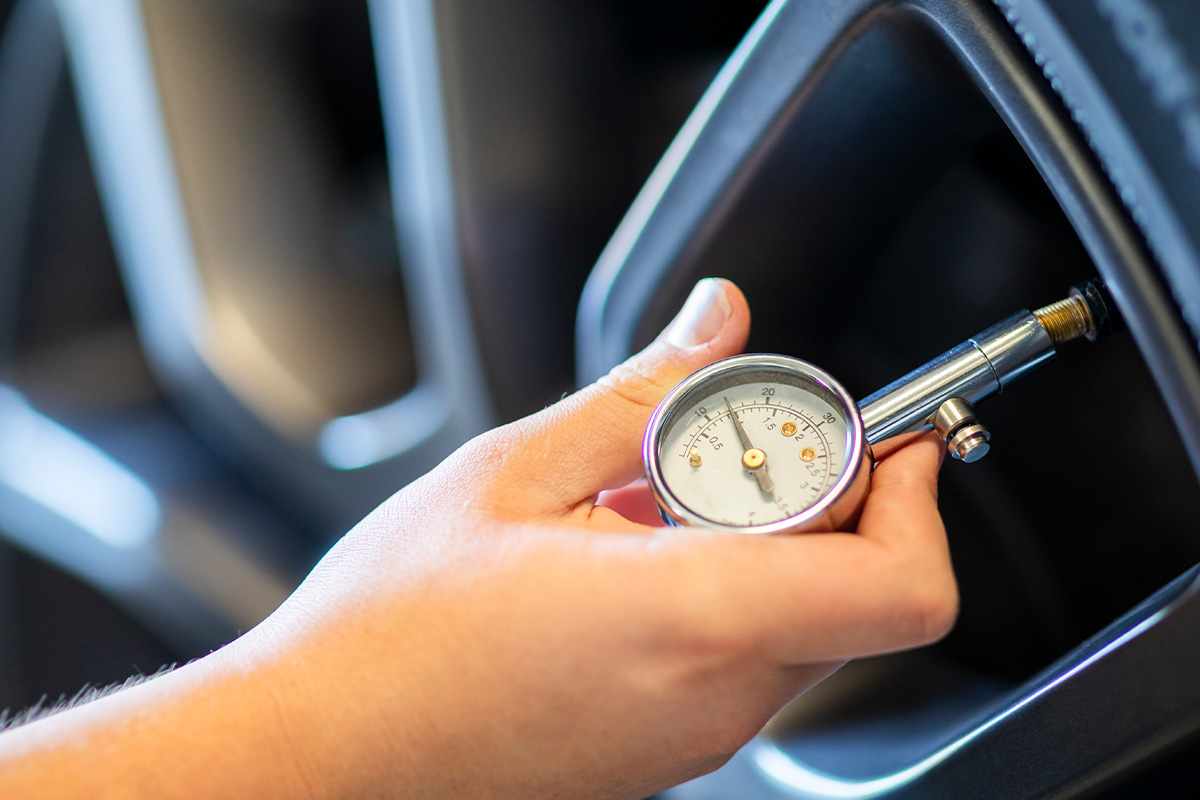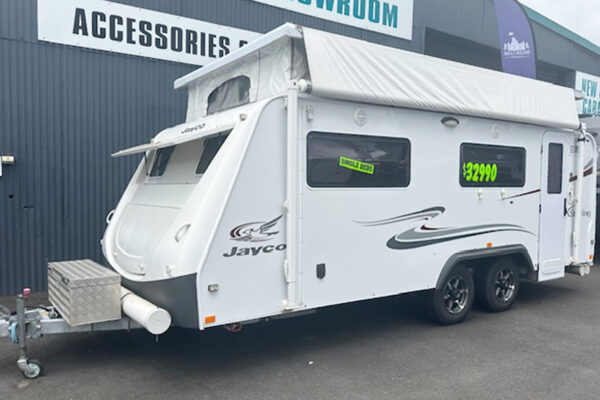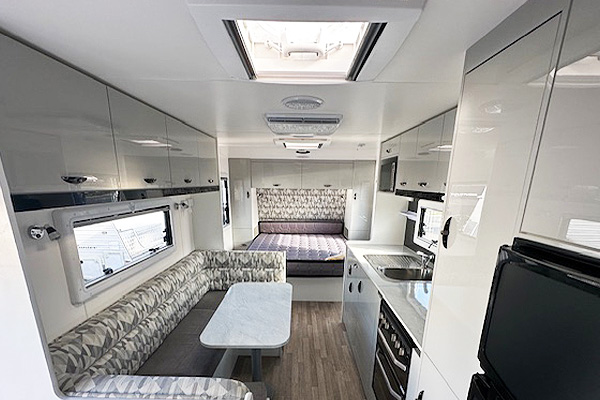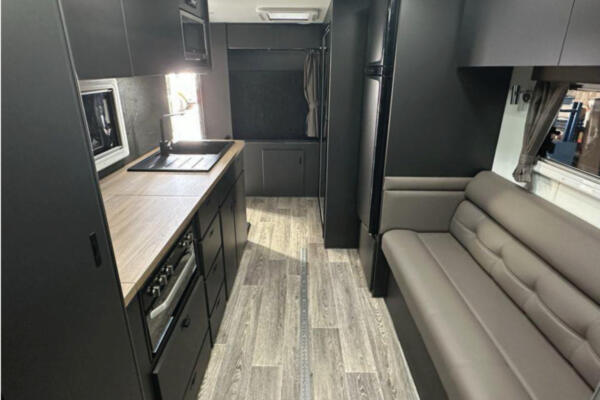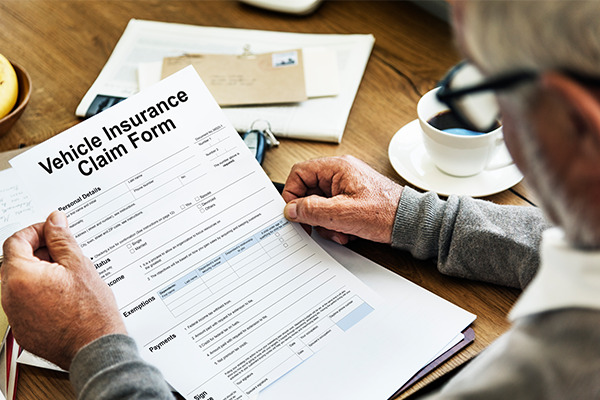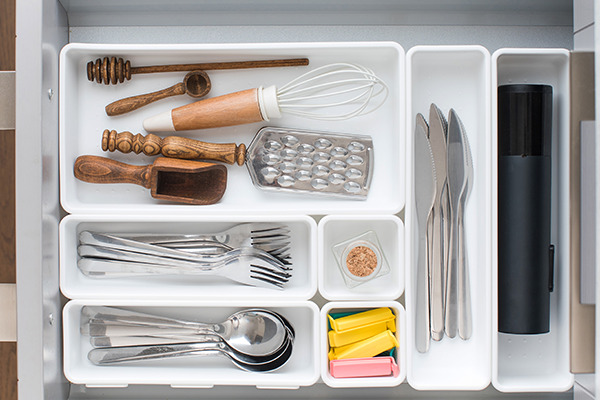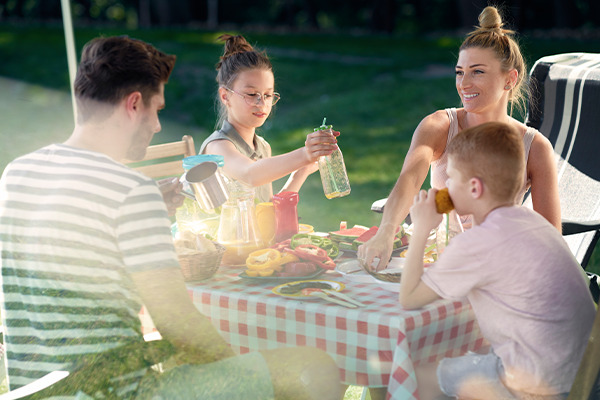Keep up to date with all things caravanning

How to Cope With Caravan Swaying
July 10, 2024
When a caravan is being towed behind a vehicle, it will occasionally sway. This might be due to a gust of wind, speed or even tyre pressure. A caravan swaying can be scary and dangerous, and is something that drivers dread. It can quickly lead to the caravan being out of control. Read on to find out everything you need to know about caravan swaying, why it happens, and how to prevent it.
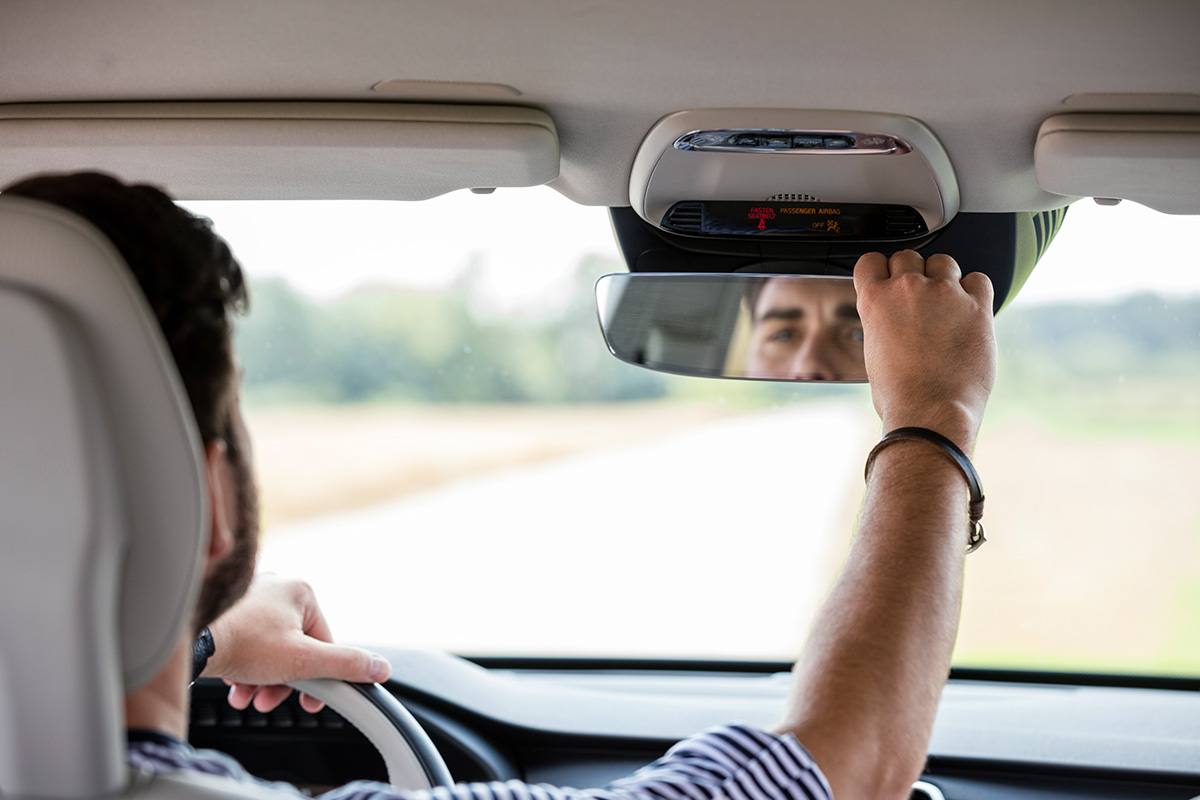
What is Caravan Swaying?
Caravan swaying is when the caravan that is being towed starts snaking from side to side behind the vehicle, rather than following the line of the car. If you looked in your rear vision mirror you would see the caravan move from left to right behind the tow vehicle. A caravan that is not swaying will appear streamlined and steady when looking in the rear vision and towing mirrors.
When a caravan is swaying or snaking behind the tow vehicle, the caravan is actually travelling a longer distance than the towing vehicle is. Because it is travelling a longer distance it is actually travelling faster. At this point, the caravan has more energy than the tow vehicle and is naturally pushing the car forward. To expel that extra energy, the caravan will swerve from side to side.
What Causes Caravan Swaying?
Caravan swaying can result from various factors, some within your control and others not. Here are key considerations that might be causing your caravan to become unstable and sway.
- Weight distribution: Caravans with uneven weight distribution can be more prone to swaying which is why loading a caravan correctly is imperative. If you have the majority of the weight located at the back part of the caravan and little at the centre or front, the caravan may become unstable. Some caravans have extra storage at the rear of the van, but try to avoid loading the back of the caravan with full water tanks, tool boxes or heavier items. Instead distribute the heavy items evenly over or forward of the axles to balance the caravan weight.
- Tyre pressure: Caravan tyre pressure that is too high or too low can result in an unstable van and higher risk of punctures. This will cause the caravan to start swaying and make it hard to control.
- Speed: The faster you drive, the more likely it is that your caravan will sway. A caravan that is being towed too fast is more likely to fishtail if the towing vehicle brakes quickly, a gust of wind occurs, or the van is poorly loaded.
- Wind: The sides of a caravan offer a large sail area for crosswinds, which can contribute to swaying. High winds blowing perpendicular to the caravan can cause it to pivot and the hitch ball to swing away, resulting in instability and potentially swerving. The larger the caravan, the more susceptible it will be to windy conditions.
- Slipstreams from larger vehicles: A large vehicle overtaking the caravan and tow vehicle at high speed can cause a gust of wind that may lead to caravan swaying. The rush of air between the vehicles causes the instability and propensity to swerve.
- Caravan loading and tow ball weight: Having the correct size tow ball is imperative for maintaining stability while towing. The appropriate tow ball with correct weight and balancing helps distribute the caravan weight evenly and minimise the risk of swaying.
- Caravan needs to be level: Ensure the car & caravan are level. If the nose of the caravan once coupled to the car is too high or too low this will cause sway. With the aid of different towing couplings or weight distribution this will ensure the car and caravan are travelling level.
How To Prevent Caravan Swaying
While caravan swaying can happen simply by a large vehicle passing by, there are ways to set yourself up to minimise the risk of caravan swaying in the first place. Some ways to prevent caravan swaying include:
- Choose a safe caravan design: Choosing a caravan with a design that encourages stability is a good start. The longer the caravan, the more likely it is to be prone to swaying. A larger caravan may be prone to excess weight as well which also contributes to instability. When choosing the caravan design, be sure to consider a smaller caravan with more stable features. One thing to consider with caravan design might be a fifth wheel trailer. This is a caravan that is designed to attach to the back of a ute or vehicle with a tray. Fifth wheel trailers use a hitch with a U-shape that is bolted through the tray or tub of the vehicle to the chassis. Because it is directly bolted over the tow vehicle’s rear axle, it reduces the hitch overhang and the likelihood of any swaying as it is a more stable design.
- Regular tyre and tyre pressure checks: The tyre pressure for both the caravan and the tow vehicle must be correct for the load it is required to carry in order for the caravan to be stable. Make sure you check the tyres and tyre pressure and understand how to calculate the correct tyre pressure for your caravan. Remember to consider both the weight of the caravan and the different terrains you might be travelling on.
- Get a weight distribution hitch: If you invest in a weight distribution hitch, it will help balance the overall tow vehicle and caravan weight. Weight distribution hitches (also known as a load equalising hitch or a load leveller) evenly distribute the weight over the entire length of the tow vehicle and the attached caravan. This results in a more stable and level ride and reduces sway significantly. The uneven balance of weight occurs when the caravan is hooked up to a tow vehicle, adding extra weight to the car’s rear axle which is called the tongue weight. This extra weight causes the tow vehicle to sag at the back and lift at the front. A weight distribution hitch redistributes the weight so it is evenly distributed. You can also buy weight distribution hitches with added sway control for extra safety when towing.
- Load your caravan correctly: Make sure your caravan is loaded correctly, that items and weight are evenly distributed. To do this, the first thing you will need to understand is your towing weights. This is the maximum amount of loaded weight your vehicle can pull legally and safely. Once you know your towing capacity, you can load your caravan, but remember it still needs to be distributed evenly to avoid swaying.
- Install sway control devices: An electronic stability control system is the best response to caravan swaying as it brakes all wheels simultaneously as soon as any sideways movement is detected. This will prevent overall sway and the potential of the caravan becoming out of control.
- Make sure your tow ball weight is not too light: As a rule, your tow ball weight should be about 10 percent of the caravan’s total weight or aggregate trailer mass (the total weight of your caravan or trailer when unhitched from the towing vehicle). If the tow ball weight is too light, it can make your caravan sway.
- Reduce your speed: When you get to high speeds, your caravan is more likely to sway. To be in control of the caravan at all times, you need to travel at a safe speed that allows you to maintain control if you need to brake suddenly, there is a strong gust of wind, or uneven road surface. As a general rule, caravans are at their safest speed at between 80 to 90 kph. Towing at this speed is more manageable and allows other vehicles to overtake safely.
What To Do if Your Caravan Sways
While prevention is better than cure, sometimes the caravan might sway. In the event of this happening, these tips will help.
- Don’t panic. Think clearly and don’t react to the situation by hitting the brakes suddenly.
- Gently back off the accelerator to slowly reduce the speed.
- Keep a light grip on the wheel and keep the vehicle pointing straight ahead.
- Use tiny steering actions as this can start correcting the caravan sway.
Caravanning adventures are exciting times, but when a caravan starts to shake and sway it can be extremely nerve-wracking. Unfortunately, sometimes this might happen so it is important to understand what to do and how to avoid it. In this article we have explained what caravan swaying is, how to prevent it, and how to handle it should it occur.
